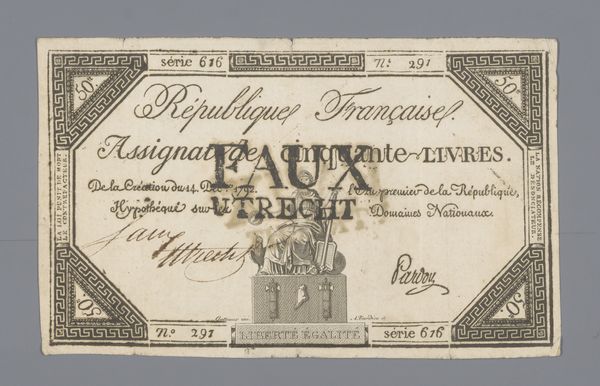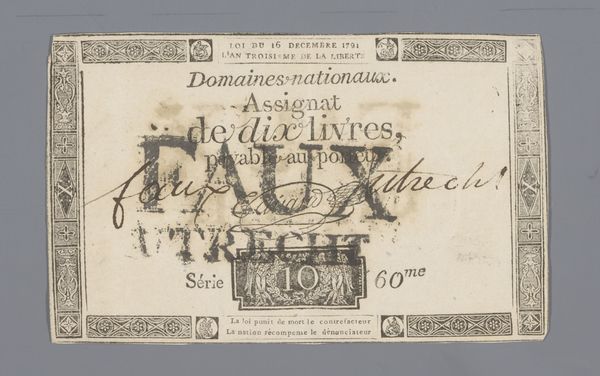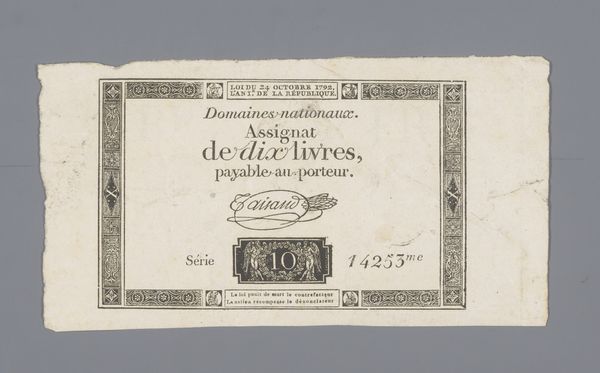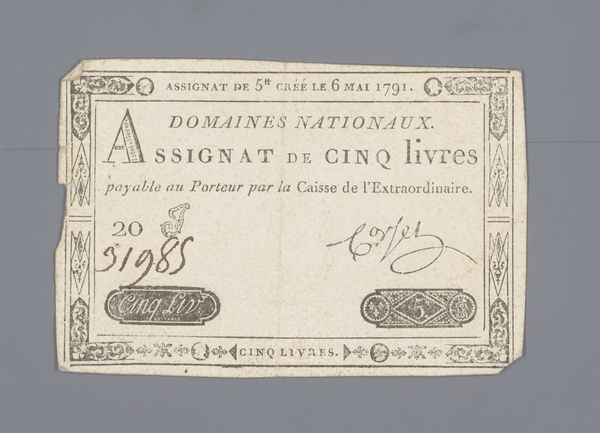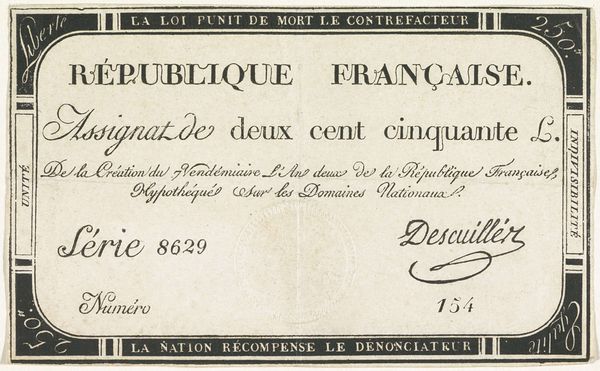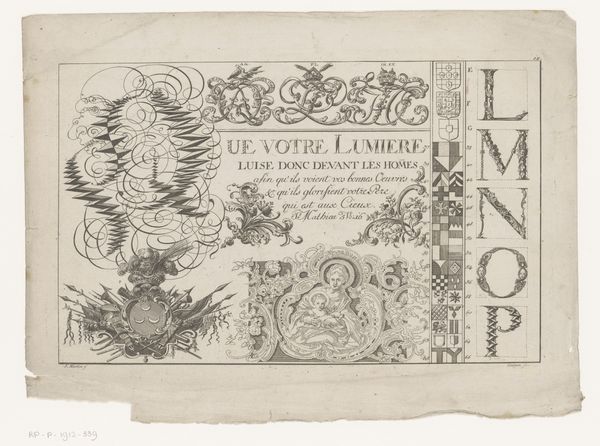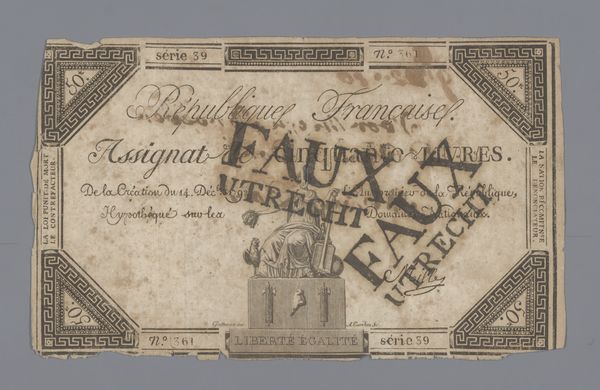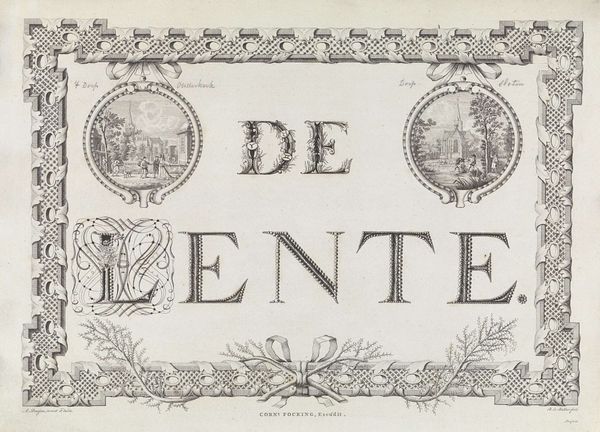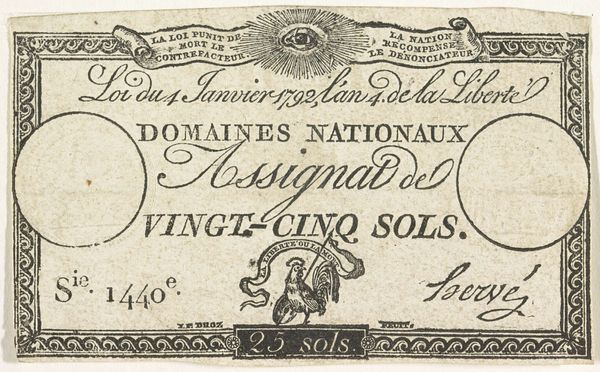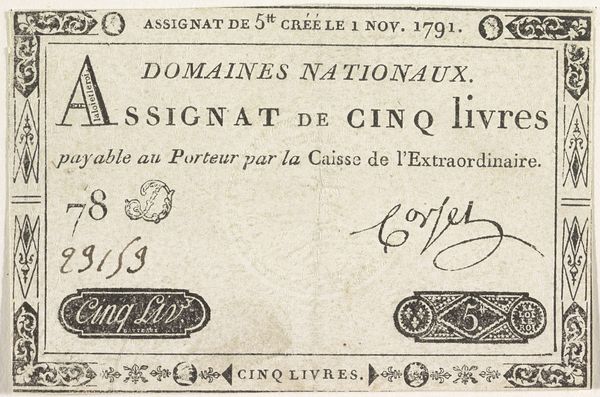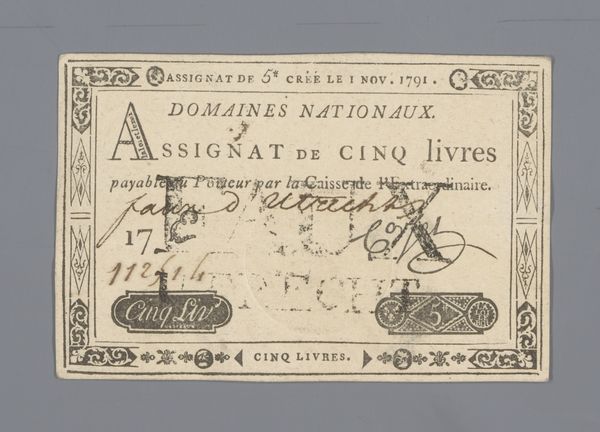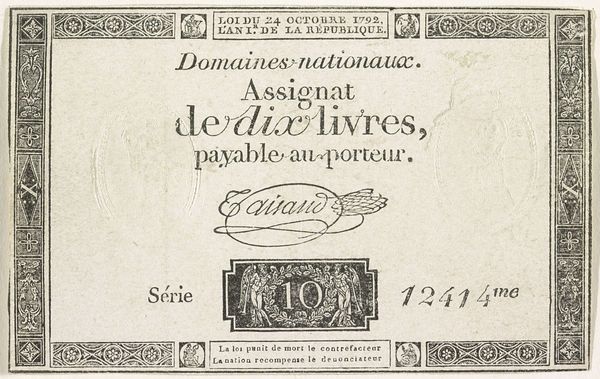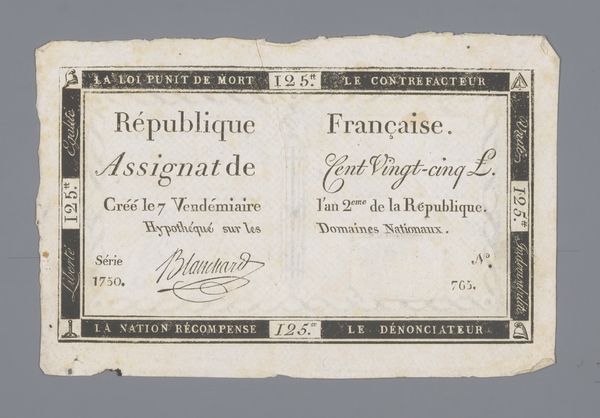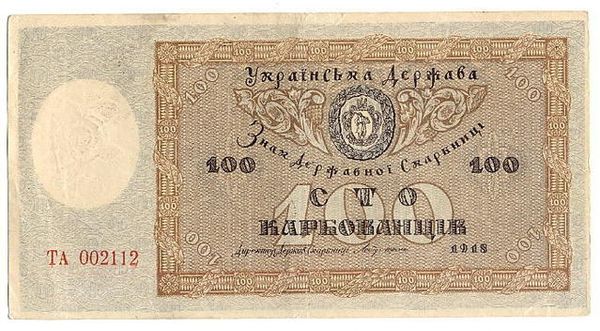
Te Utrecht ongeldig gemaakte assignat van vierhonderd livres, serie 60, nr. 247 uitgegeven 21 november 1792 Possibly 1792 - 1793
0:00
0:00
graphic-art, print, paper, engraving
#
graphic-art
#
neoclacissism
# print
#
paper
#
history-painting
#
engraving
Dimensions: height 12.1 cm, width 19.7 cm
Copyright: Rijks Museum: Open Domain
This is Nicolas Marie Gatteaux's "Te Utrecht ongeldig gemaakte assignat van vierhonderd livres" printed on November 21, 1792. Produced during the French Revolution, this assignat—or paper money— reflects a society in flux and the economic turmoil of the time. The words "faux" and "trechi" appear on the money, indicating that it is counterfeit. The assignat makes reference to the "Domaines Nationaux," the lands of the church and nobility seized by the revolutionary government. It is a visual representation of the upheaval of the old order and the rise of a new republic. This piece reflects the intense social and economic anxieties of revolutionary France. What does it mean for a currency to be both a symbol of national identity and a site of contestation? Consider how this invalidated assignat mirrors the revolution's broader project: an attempt to construct a new social and economic order from the ruins of the old. It serves as a reminder of the human desire to assign worth, both monetary and symbolic, to the objects that surround us.
Comments
No comments
Be the first to comment and join the conversation on the ultimate creative platform.
